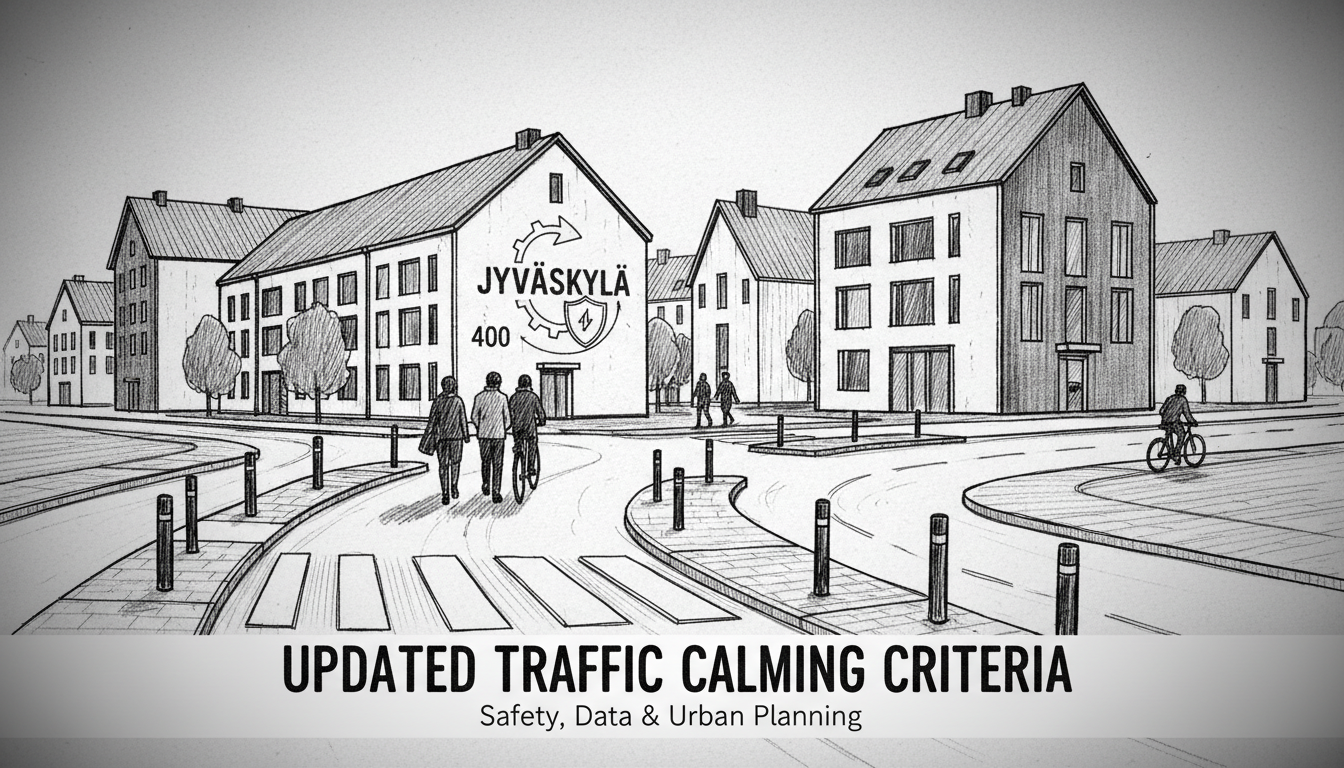The city of Jyväskylä maintains over 400 traffic calming measures throughout its street network. Most of these features are various types of speed bumps and raised sections. Recent calculations show 164 traditional asphalt humps and nearly the same number of raised pedestrian crossings. The city's traffic calming portfolio also includes elevated intersection areas, narrow pillow-style speed bumps, and narrowed driving lanes.
City planning officials approved updated scoring criteria for traffic calming installations. This new system evaluates the need for additional measures more thoroughly than previous methods. The revised scoring helps select appropriate calming solutions for each location. Assessment criteria now prioritize safety concerns above other factors. Planners also consider land use specifics like school zone traffic patterns. Road characteristics including relationship to intersecting streets and traffic volumes receive detailed evaluation.
Finland's approach to urban traffic management emphasizes pedestrian safety and reduced vehicle speeds. The Nordic country has consistently ranked among European leaders in traffic safety outcomes. Jyväskylä's systematic evaluation method reflects Finland's data-driven transportation planning tradition. Municipalities across the country employ similar detailed assessment frameworks.
Traffic calming measures represent a significant municipal investment in public safety. The updated scoring system ensures limited resources target the most critical locations first. This prioritization method helps cities like Jyväskylä maximize safety benefits within budget constraints. The comprehensive approach considers both immediate safety concerns and long-term urban development goals.
Nordic urban planning typically integrates traffic safety with environmental quality and livability objectives. Finnish cities frequently employ traffic calming as part of broader sustainable mobility strategies. These approaches align with national targets for reducing traffic injuries and fatalities. The emphasis on pedestrian infrastructure reflects Nordic values prioritizing vulnerable road users.
International observers might note the systematic nature of Finnish traffic management. The scoring criteria provide transparent justification for infrastructure investments. This method contrasts with more ad-hoc approaches seen in some other countries. The data-driven process helps build public support for traffic calming measures.
Jyväskylä's implementation demonstrates how midsize Finnish cities address urban mobility challenges. The balanced approach considers both vehicle movement and community quality of life. This reflects the Nordic model of integrated urban planning where transportation serves broader social objectives beyond mere mobility.
The updated criteria come as cities worldwide grapple with increasing urban density and traffic volumes. Finland's method offers one template for managing these competing demands while maintaining safety standards. The emphasis on measurable outcomes and systematic evaluation provides lessons for other municipalities facing similar challenges.

